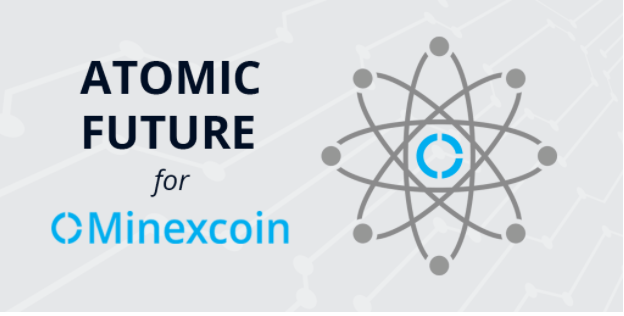The low volatility cryptocurrency and payments system platform Minexcoin (MNX) has just recently performed a series of successful atomic swap tests between the MNX and Bitcoin blockchains.
Disclosure: This is a Sponsored Article
Atomic swaps, also known as atomic cross-chain trading, is a new technology that proposes to allow for the direct exchange of one cryptocurrency with another from different blockchains, without the need for an intermediary.
Today, the majority of cryptocurrency exchange and trading happens over centralized platforms, requiring users and traders to trust the platform owners to complete their exchanges. Essentially, atomic swaps is a decentralized, trustless alternative to the current convention.
The future of decentralized exchanges lies in atomic swaps
The latest updates from MNX suggest that the launch of a decentralized exchanger without fees could be the starting point for the development of a trustless exchange
In recent months, atomic swaps have been successfully completed across the blockchains of major cryptocurrencies such as Bitcoin, Litecoin and Zcash. However, most of these have only been conducted on test nets (as opposed to main nets) and have been tedious and complex to achieve.
MNX lead blockchain developer Roman Hulenko points out that atomic swaps must move beyond the conducive environs of test nets to move forward, even with the major challenges, such as the inability to guarantee full security:
“Every blockchain that could support Atomic Swaps, more or less, but is at risk. I think today’s main global developer’s goal is to minimize dangers rather than simply launch cross-chain trading in the blockchain.”
Hulenko believes that MNX has come upon a solution that significantly minimizes the risk and is planning to implement this solution in an exchange to provide a secure environment for traders.
The priority right now is for MNX to successfully perform the first ever cross-chain exchange between MNX and Bitcoin on the main nets, after which, it will publish its protocol on GitHub for open examination and further testing of atomic swaps on other blockchain assets.
Once achieved, the MNX team will eye pairings with other alternative blockchains such as Litecoin and Zcash. Eventually, MNX atomic swaps will feature a GUI to ease users with less programming knowledge into the process of atomic swapping, rather than the current complex consoles.
The new MNX system will allow two users to reach and exchange agreement, after which each will open the GUI with simple information: wallet address, amount of coins to send and amount expected to be received. Once all the information is complete, users simply need to submit the request and the MNX protocol will complete the atomic swap. If the exchange fails for any reason, each user will be returned their coins.
The road to decentralization
Initially, MNX will offer its service without cost to analyze demand, user behavior and modifications need. While MNX is dedicated to developing a fully decentralized exchange, it foresees several challenges.
While being able to offer facilitation of the swaps without fees, the new system faces two main issues. The first is the need for a more advanced atomic protocol that can only be developed after the light exchanger has been implemented and finalized. The second is dubbed as “atomic hype”, which refers to the misinformation regarding decentralized exchanges.
As popular as the idea has become, MNX notes that most decentralized exchanges in reality are in fact only trustless in the exchange, but centralized in nature, despite being free of third parties.
MNX’s ultimate goal will be to develop a truly decentralized exchange but is aware that this objective will require time to achieve. Meanwhile, it welcomes open testing of its protocol by the crypto community to test its first trustless exchange, as soon as is possible.
To learn more about Minexcoin, visit the website and read the whitepaper. To examine the source code, visit their page on GitHub or connect with their developers on Telegram. Follow the latest updates on Twitter and Facebook.

